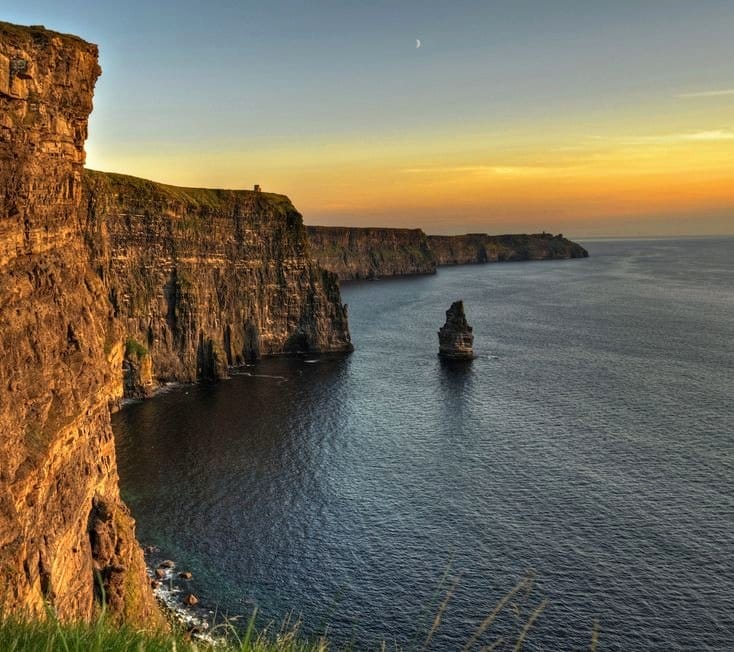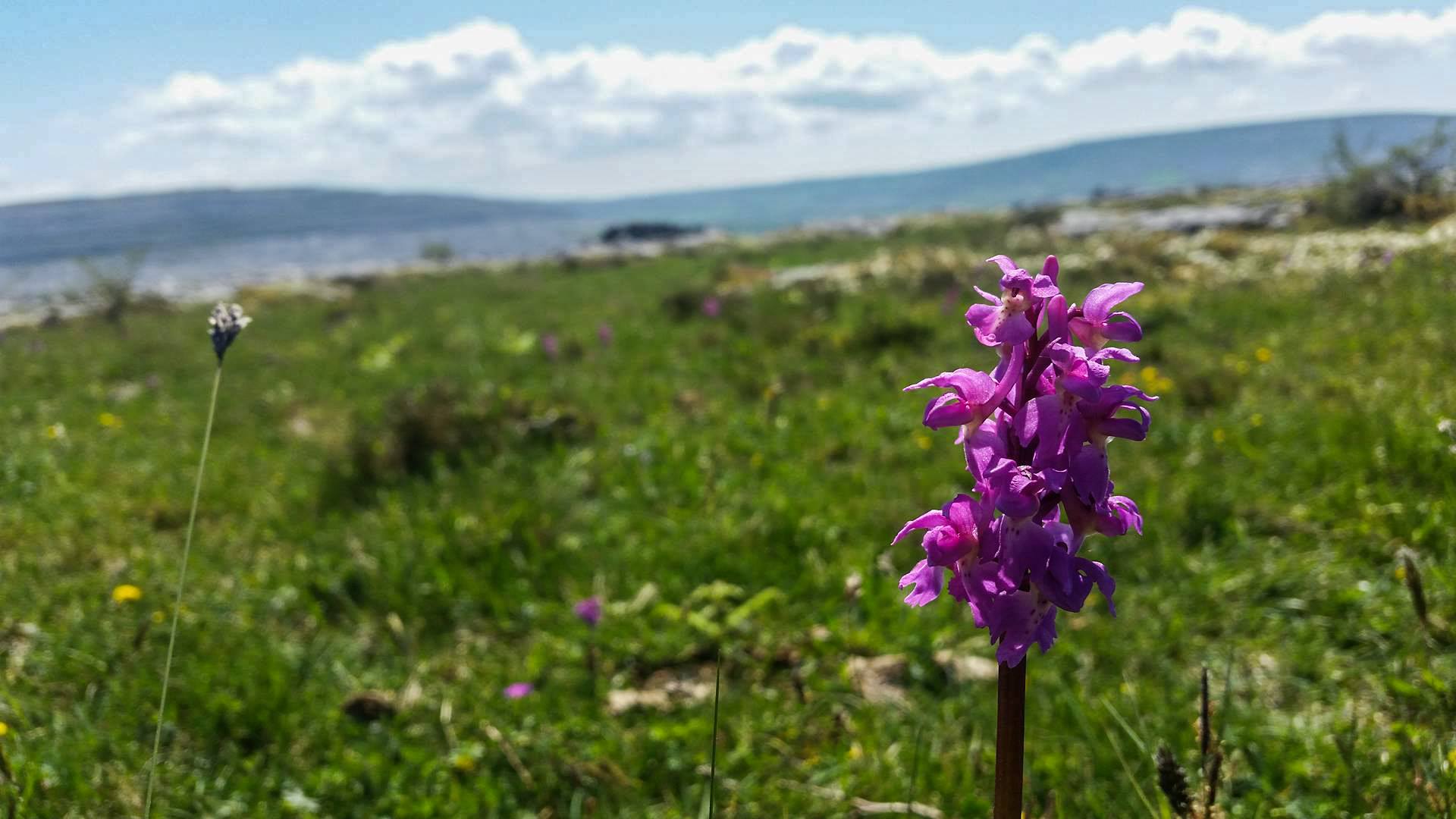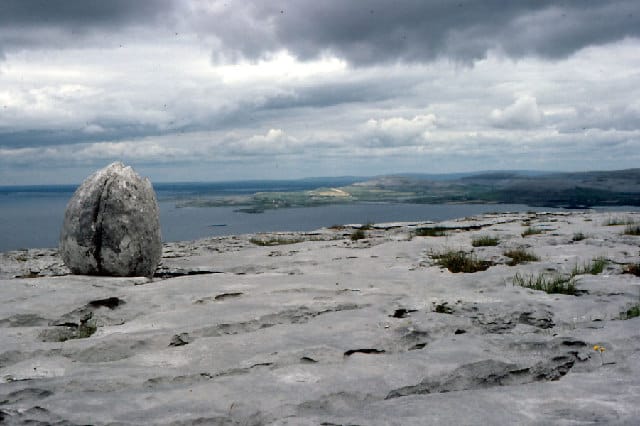The Burren is one of the most fascinating ecosystems in the world and the Burren Way walking trail is an amazing way to experience this unique place. In this blog post, we look into some of the many interesting facts about The Burren.
How did some of the world’s most spectacular sea cliffs form, mere miles from where a unique karst landscape lies?
Flowers that need an arctic climate and those that need a Mediterranean climate relax side by side. Both are blown by the wind that roars in from the wild Atlantic ocean.
In just 1% of Ireland’s landmass you can find 70% of Ireland’s native plant species.
Not to mention how people settled in this seemingly desolate landscape, and actually managed to farm here.

The Cliffs of Moher are how old?
The Cliffs of Moher began their formation in the Carboniferous period, over 300 million years ago. Sand and mud was washed to the mouth of a large delta by rivers, and the sediment built up over millions of years.
This sediment was compressed and solidified into sandstone, shale and mudstone which created the layers that we see in the cliffs today.
Tiny fossils of feeding trails from ancient marine creatures can still be seen in the rocks. This has lead to Liscannor (the nearby town) flagstone being an incredibly popular building and decorated material, and paved the way for a thriving quarry industry.
Where Arctic and Mediterranean flora meet.
Ireland has 900 native plant species, and 70% of these can be found in the Burren.
Mediterranean flowers sway in the same breeze as Arctic flowers. Flora that love limestone shares the same ground with flora that hate limestone.
Such diversity exists because of the practice upland grazing, known as winterage. Winterage allows weeds and grass to be removed, allowing the plants below to thrive and grown.
Winterage, coupled with the warm Gulf Stream, allow a vast variety of different plant life to grow. The Burren’s interesting climate and landscape seems to let very different plants thrive in such a small space.

Giant glacial deposits
While all of the limestone in the Burren wasn’t left there by glacial deposits, large boulders which are dotted around the landscape were.
Roughly two million years ago, northern Europe was in the midst of an ice age, and it was these moving ice sheets that picked up and deposited rocks along their routes.

Surely no man can live in such a sparse and barren region?
Interestingly, it was probably the first settlers in the Burren who deforested and farmed the land. Even today, cows and goats roam across the wide plains, grazing as they go.
Ancient religious structures and forts found in the Burren tell a unique story, showing that settlers came, stayed and thrived in this seemingly hostile landscape.
There was even a famous bards’ college which attracted students from all over Europe.

While the Burren may seem like a sparse, desolate and unforgiving place, it is actually quite the opposite.
It gives life to unique and contracting species, provides land for farming and contains some of the most wondrous and interesting insights into Irish archaeology and history.
We hope that you enjoyed this guide to The Burren: Interesting Facts. If you’re interested in taking a self-guided hiking tour through this beautiful landscape, check out our range of Burren Way Hiking Tours.


